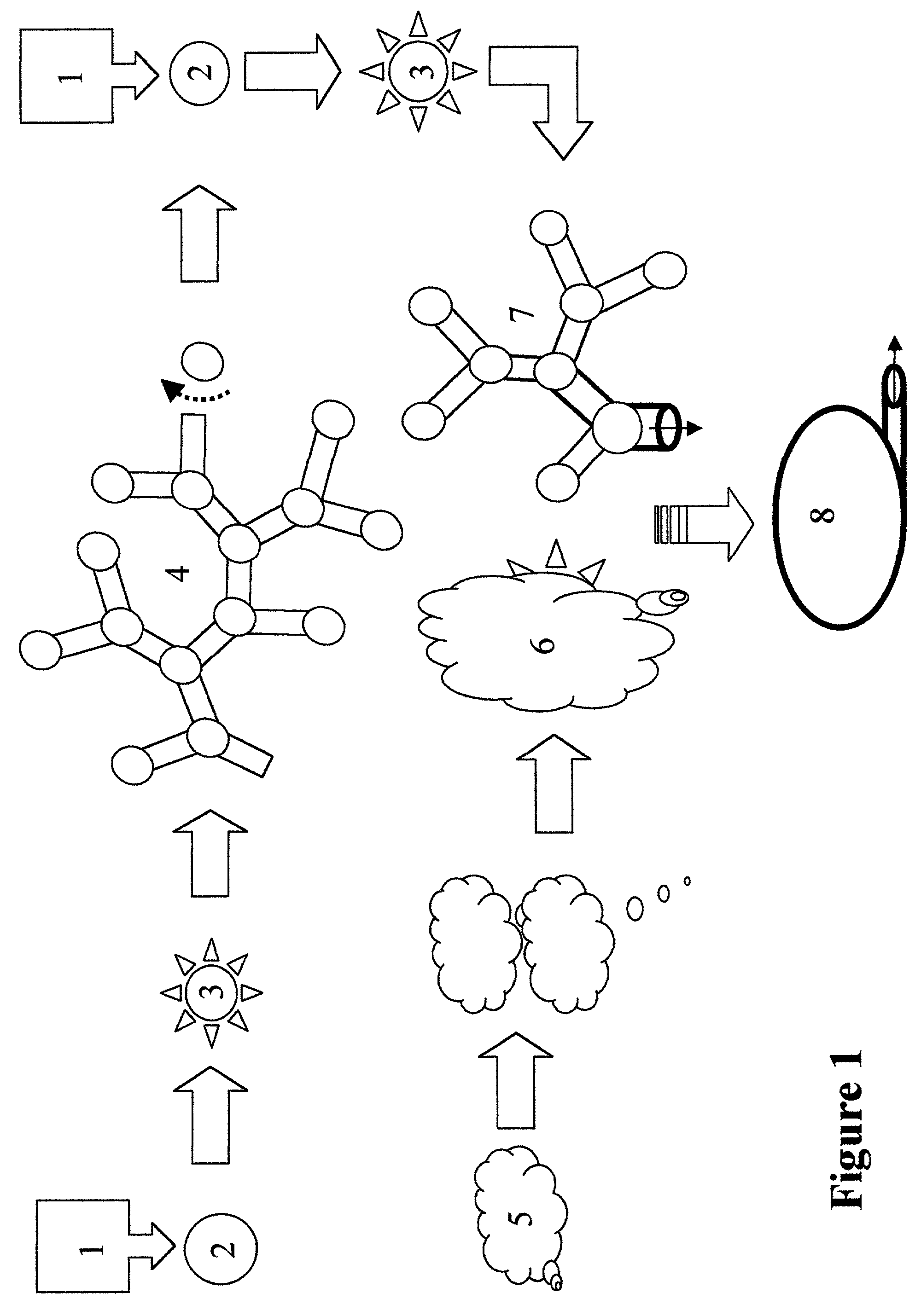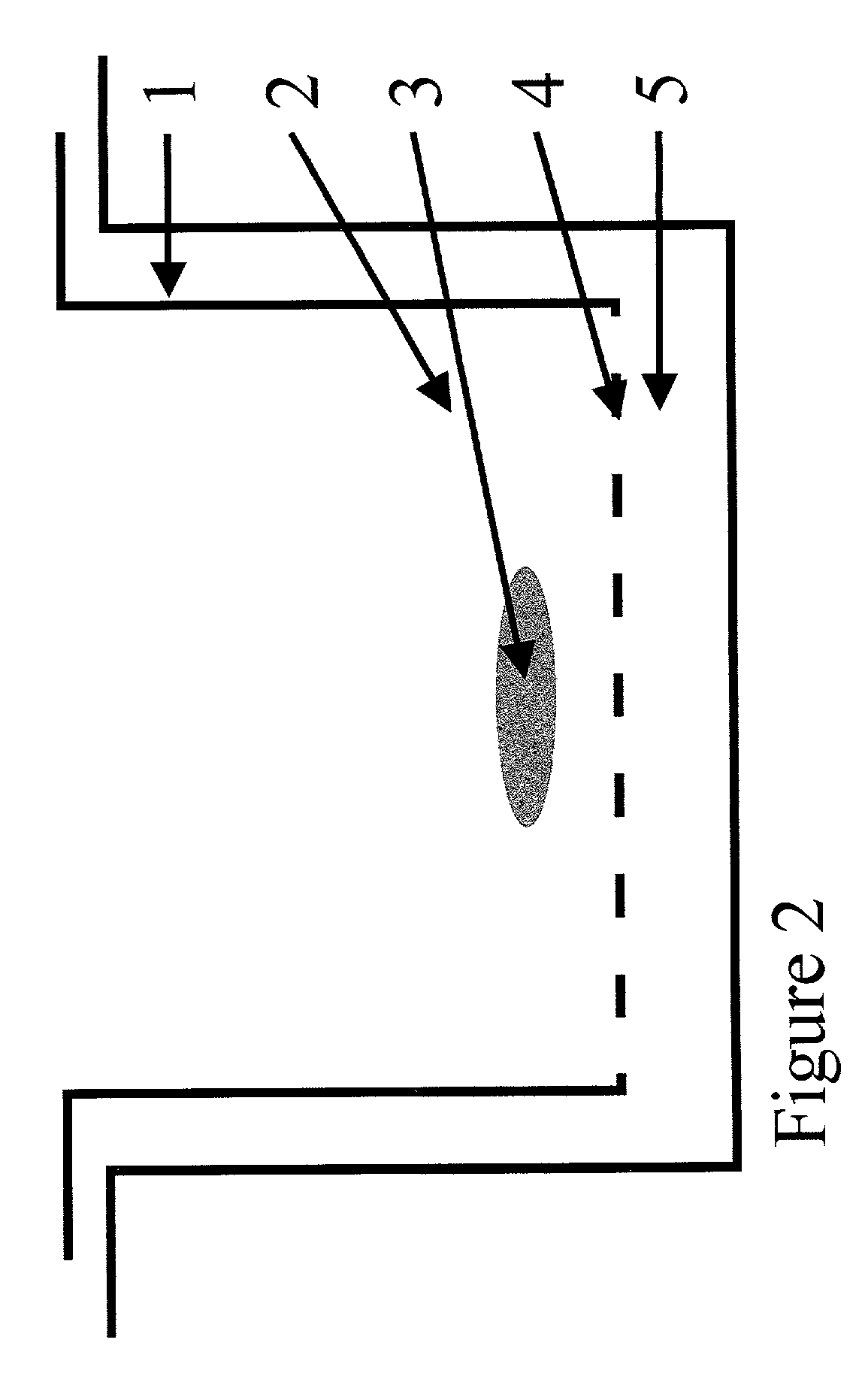Method of forming vascularized kidney tissue
a vascularized kidney and tissue technology, applied in the field of new kidney engineering in vitro, can solve the problems of inability to promote the proliferation and branching morphogenesis of isolated ub in vitro, no known soluble factor or set of factors had been able to induce ub branching morphogenesis in vitro, and a variety of defects in the kidney and urinary collecting system
- Summary
- Abstract
- Description
- Claims
- Application Information
AI Technical Summary
Benefits of technology
Problems solved by technology
Method used
Image
Examples
example 1
[0041]Isolation of ureteric bud (UB) epithelium and UB culture (Proc. Natl. Acad. Sci., 86, 7330–7335, 1999 incorporated herein by reference): Kidney rudiments were dissected from timed pregnant Sprague Dawley rats at gestation day 13. (The plug day was designated as day 0). The UB was isolated from mesenchyme by incubating kidney rudiments in 0.1% trypsin in the presence of 50 U / ml DNAase at 37° C. for 15 minutes, and by mechanical separation with two fine-tipped minutia pins. For culture, Transwell tissue culture plates and a polycarbonate membrane insert with 3 um pore size were used. The extracellular matrix (ECM) gel (a mixture of type I collagen and Matrigel) was applied on top of the Transwell insert. Isolated UB was suspended in the ECM gel and cultured at the interface of air and medium. All cultures were carried out at 37° C. with 5% CO2 and 100% humidity in DMEM / F12 supplemented with 10% Fetal Calf Serum (FCS). Growth factors were added as indicated elsewhere. Culture med...
example 2
[0042]Cells and conditioned media: The BSN cell line was derived from day 11.5 mouse embryonic kidney metanephric mesenchyme originally obtained from a mouse line transgenic fro the early region of SV-40 / large T antigen. As described elsewhere, the BSN cells express the mesenchymal protein marker vimentin, but not classic epithelial marker proteins such as cytokeratin, ZO-1 and E-cadherin. Differences in the expression patterns of 588 genes in BSN cells have been analyzed by the inventors on commercially available cDNA grids (Am. J. Physiol.—Renal Physiol., 277, F:650–F663, 1999), and confirmed the largely non-epithelial character of BSN-cells, though it remains to be determined whether they are mesenchymal or stromal, or have characteristics of both cell types. The SV-40 / large T antigen transformed UB cell line and murine inner-medulla collecting duct (mIMCD) cells have been extensively characterized before. To obtain conditioned media, a confluent cell monolayer was washed with se...
example 3
[0043]The ECM gel mix: The ECM gel mix was composed of 50% type I collagen (Collaborative Biomedical Product) and 50% growth factor-reduced Matrigel® (Collaborative Biomedical Product). The procedure for gelation has been previously described in detail and is incorporated herein.
PUM
 Login to View More
Login to View More Abstract
Description
Claims
Application Information
 Login to View More
Login to View More - R&D
- Intellectual Property
- Life Sciences
- Materials
- Tech Scout
- Unparalleled Data Quality
- Higher Quality Content
- 60% Fewer Hallucinations
Browse by: Latest US Patents, China's latest patents, Technical Efficacy Thesaurus, Application Domain, Technology Topic, Popular Technical Reports.
© 2025 PatSnap. All rights reserved.Legal|Privacy policy|Modern Slavery Act Transparency Statement|Sitemap|About US| Contact US: help@patsnap.com



